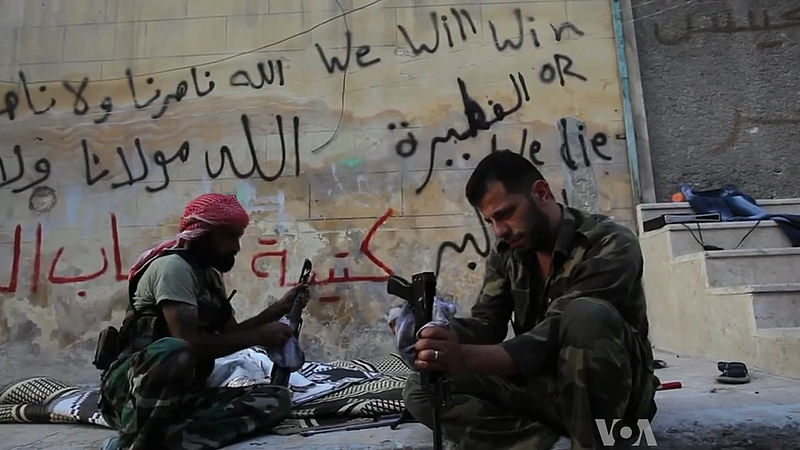 The CIA is expanding a clandestine effort to train opposition fighters in Syria amid concern that moderate, U.S.-backed militias are rapidly losing ground in the country’s civil war, U.S. officials said.
The CIA is expanding a clandestine effort to train opposition fighters in Syria amid concern that moderate, U.S.-backed militias are rapidly losing ground in the country’s civil war, U.S. officials said.
But the CIA program is so minuscule that it is expected to produce only a few hundred trained fighters each month even after it is enlarged, a level that officials said will do little to bolster rebel forces that are being eclipsed by radical Islamists in the fight against the government of Syrian President Bashar al-Assad.
The CIA’s mission, officials said, has been defined by the White House’s desire to seek a political settlement, a scenario that relies on an eventual stalemate among the warring factions rather than a clear victor. As a result, officials said, limits on the agency’s authorities enable it to provide enough support to help ensure that politically moderate, U.S.-supported militias don’t lose but not enough for them to win.
The officials, who spoke on the condition of anonymity to discuss intelligence matters, said the agency has sent additional paramilitary teams to secret bases in Jordan in recent weeks in a push to double the number of rebel fighters getting CIA instruction and weapons before being sent back to Syria.
The agency has trained fewer than 1,000 rebel fighters this year, current and former U.S. officials said. By contrast, U.S. intelligence analysts estimate that more than 20,000 have been trained to fight for government-backed militias by Assad’s ally Iran and the Hezbollah militant network it sponsors.
The CIA effort was described as an urgent bid to bolster moderate Syrian militias, which have been unable to mount a serious challenge to Assad or match the growing strength of rival rebel factions that have hard-line Islamist agendas and, in some cases, ties to the al-Qaeda terrorist network.
The CIA is “ramping up and expanding its effort,” said a U.S. official familiar with operations in Syria, because “it was clear that the opposition was losing, and not only losing tactically but on a more strategic level. . . .”
U.S. officials said the classified program has been constrained by limits on CIA resources, the reluctance of rebel fighters to leave Syria for U.S. instruction and Jordan’s restrictions on the CIA’s paramilitary presence there.
But the limited scope also reflects a deeper tension in the Obama administration’s strategy on Syria, one that has sought to advance U.S. interests but avoid being drawn more deeply into a conflict that the United Nations estimates has killed more than 100,000 people since it began in 2011.
Image: FSA fighters cleaning their AK-47s in Aleppo (photo: Voice of America)
